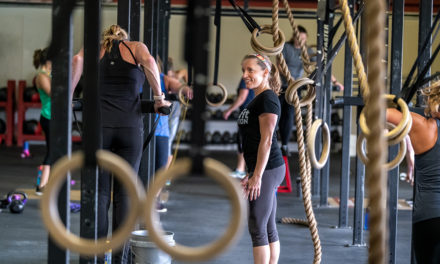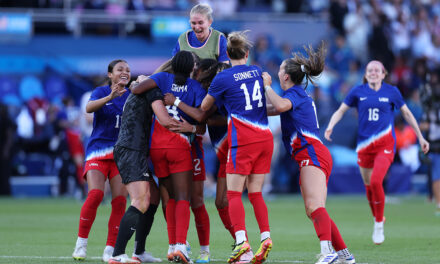Running can be torture when you’re healthy and all your body parts are in proper working order. When something goes wrong, it can stop you in your tracks, which can be frustrating when you’re training for a race or have put a lot of time and energy into improving your stamina and your fitness—only to see it reverse direction while you’re sidelined. While you can’t always avoid injuries, getting them diagnosed quickly and healing efficiently can be the key to getting back on track without losing momentum or mojo. Here’s a breakdown of five common running injuries and expert advice on treating them.
Shin splints
What is it? Medically known as medial tibial stress syndrome, shin splints are small tears in the tibia that hurt. They “often strike at the beginning of training or after building up mileage too quickly,” according to the Runner’s World Big Book of Marathon and Half-Marathon Training. People get them from by wearing high-mileage shoes or inappropriate shoes (a cushioned shoe when you need one for stabilization) having flat feet, high arches, or tight calf muscles.
Treat it: Take a rest day or two and cut back on mileage. In between workouts, ice the shins for 10-15 minutes.
Recovery time: Pain should subside in about 2 weeks. If it’s not improving, it could be a stress fracture, says Hari Bezwada, M.D., director of the Capital Health Total Joint Center of Excellence in Hopewell, N.J.
Plantar fasciitis (PF)
What is it? Small tears in the plantar fascia, the strong and flexible band of tendons and ligaments on the bottom of your feet, caused by long periods of standing, having flat feet or high arches, or a sudden increase in hill-work or mileage. If you wake up in the morning with intense pain on the bottom of your foot near the heel, or at the beginning of a run that goes away in a few minutes, you probably have PF.
Treat it: Roll a frozen water bottle under the foot’s arch a few times a day and take anti-inflammatories to reduce swelling. Massage the tissue to increase blood-flow by rolling a golf ball under the foot. Try a “night-splint that keeps your foot at neutral,” advises Bezwada, like the Strassburg sock, it stretches the plantar fascia and strengthens the arch during sleep.
Recovery time: PF is known to linger, it can take a few months.
Iliotibial band syndrome (IT Band)
What is it? “It’s the leading cause of knee pain in runners,” says Bezwada. This thick band of connective tissue spans the length of your outer leg, from the top of your hip to below your knee. When inflamed from repeated knee flexion and extension during running, the outside of the knee may sting and swell, he says. Runners with weak gluteal muscles, bow-legs, or pronators, (the ankle rolls inward) may experience this condition. Running on uneven roads or running in the same direction on a track can also cause it.
Treat it: Take a rest day or two and when you resume running, “cut your mileage in half for about a week,” advises Runner’s World Big Book of Marathon and Half-Marathon Training. Stretch the IT band and strengthen the outer thigh muscles. Roll up and down the outer side of your leg from the hip to above the knee on your side while on top of a foam roller before and after a run. Do lateral side steps with a resistant band above your knees wrapped around your legs. Walk 10 steps to the right, then 10 steps to the left. Work up to 15 steps in each direction.
Recovery time: It could sideline you for a few weeks. Swimming, pool running, or the elliptical are good cross-training options.
Patellofemoral pain syndrome (PFPS, runner’s knee)
What is it? Pain behind, underneath or around the kneecap that gets worse after a long run, during prolonged sitting or while walking up and down stairs. It’s an overuse injury more common in women than men, according to the American Physical Therapy Association. Pain may progress to the inside or outside of the knee and linger. Weak quads, hips, and gluteals can lead to poor tracking of the knee (how well the knee-cap glides over the femur, the bone that connects the knee to the thigh) during movement and cause PFPS.
Treat it: Rest, take anti-inflammatories, and get physical therapy. “Exercises to increase flexibility and strengthen the quadriceps are important,” says Bezwada. “Taping and bracing the kneecap may help.”
Recovery time: Recovery is about 6 weeks, says Bezwada.
Achilles tendonitis
What is it? The Achilles tendon, the largest tendon in the body, connects calf muscles to the heel. It becomes inflamed from sudden increases in mileage, running too many hills, tight calves, or even the wrong shoes. Runners will feel a dull ache in the back of the ankle or foot.
Treat it: Rest or reduce your mileage or training. Ice it several times a day and take ibuprofen or naxoproxin. The American Academy of Orthopedic Surgeons suggests this calf stretch: Stand in front of a wall, lean forward keeping the right leg straight and the heel on the ground. Step forward with the left leg; push your hips forward until you feel a stretch the right calf. Hold for 10 seconds, do 20 reps, switch and stretch the left leg.
Recovery Time: “Treatment in mild cases may improve in 2 to 4 weeks, occasionally 6 weeks,” says Bezwada.






